

Pakistani cuisine is the lesser-known cuisine of the subcontinent, although it is rich in tradition and offers a wide range of delectable dishes. Pakistan was established in 1947 after India gained independence from British colonial rule and was partitioned. Its population is primarily Muslim.
Despite the fact that Pakistan is a new country, its cuisine has evolved over many years and contains influences from its neighbors, India, Afghanistan, and Iran. The numerous locations also mean a diverse selection of foods - from Sindh province's rich valleys and sea to pastoral Baluchistan from neighboring Iran, to the Punjab's five rivers and the rocky North West Frontier, home of the chapli kebab.
Pakistani cuisine is a fusion of regional cooking traditions from the Indian subcontinent, Central Asia, and Western Asia, as well as features from the Mughal era. The ethnic and cultural diversity of the country has resulted in a variety of cuisines.
The majority of Pakistani culture food, which has its origins in Punjab's eastern provinces and parts of Sindh, is commonly described as 'highly seasoned' and'spicy,' and overlaps with Indian cuisine. The cuisine of Azad Jammu and Kashmir, Balochistan, Khyber Pakhtunkhwa, and Gilgit-Baltistan, on the other hand, is described as'mild,' sharing many features with Afghanistan, Iran, and neighboring Middle Eastern and Central Asian regions.
In major cities such as Islamabad and Karachi, international cuisine and fast food are popular; fusion cuisine, such as Pakistani Chinese cuisine, combines native and foreign flavors. As a result of changing lifestyles, ready-made masala mixes (combined and ready-to-use spices) are becoming more popular.
Both Indo-Aryan and Iranian cultures, as well as Muslim culinary traditions, have affected Pakistani cuisine. The Indus Valley Civilization, which flourished throughout the Bronze Age, left evidence of organized prepared food in the region. Sesame, eggplant, and humped cattle were domesticated in the Indus Valley around 3000 BCE, while spices such as turmeric, cardamom, black pepper, and mustard were harvested around the same time. Wheat and rice have been the staple staples of the Indus Valley for at least a thousand years.
The entrance of Islam in South Asia through trade and sporadic conquests had a significant impact on the region's local food; Pakistan's cuisine adheres to stringent Islamic dietary restrictions due to its Muslim-majority population. Most notably, Islamic regulations prohibiting the use of pork and alcohol have altered Pakistani cuisine's focus to other types of meat, such as cattle, lamb, poultry, and fish, as well as a range of fruits, vegetables, and dairy.
Pakistani cuisine is rich, spicy, ghee-heavy, and delectable.
We will share the best dishes with you in this list of 17 dishes to eat in Pakistan. Prepare yourself for a heavy dose of Pakistani food flavor and regional delicacies. Enough with the introductions let's get to the food.
To get this list off to a good start, let's talk about Nihari.
The National dish of Pakistan.
When it comes to Pakistani cuisine, this meal is truly a game-changer for me. This is without a doubt one of the best breakfasts I've ever had anywhere on the planet.
Nihari starts with a pile of dried spices that are fried in vegetable oil and animal fat. The meat elements (most typically beef shank) are followed by a generous serving of Desi Ghee (home-made local clarified butter). The slow-cooking stew is then combined in a magnificent cauldron of a saucepan.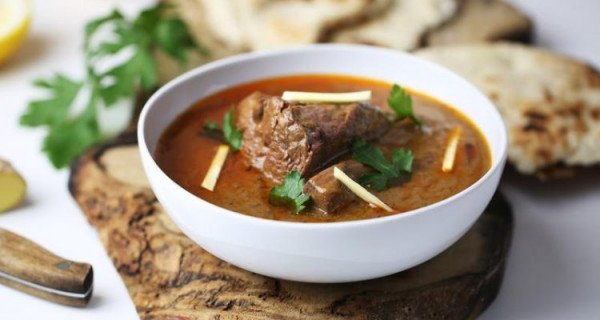
The meat chunks are literally floating in desi ghee, and the consistency is flowing and thick. The spice and infused ghee give it a deep red color. Nihari is served on communal plate-trays with a side-plate of aromatic sliced ginger, fiery green chilies, and a squeeze of fresh lime or two.
Halwa puri would have to be the one particular Pakistani breakfast that everyone enjoys.
For the rest of the day, it is known to cause emotions of tremendous contentment, even to the point of laziness. In Pakistan, one of the most popular breakfasts is the Halwa Puri Recipe.
Puris are thinly folded dough layers that generate countless ultra-crispy layers when submerged in boiling oil or desi ghee. The folding manner causes the puris to puff up immediately when submerged in boiling oil or desi ghee.
The puris are then served with halwa, a delicious pudding-like delicacy prepared from semolina. However, in addition to halwa and puri, chickpea curry is frequently served.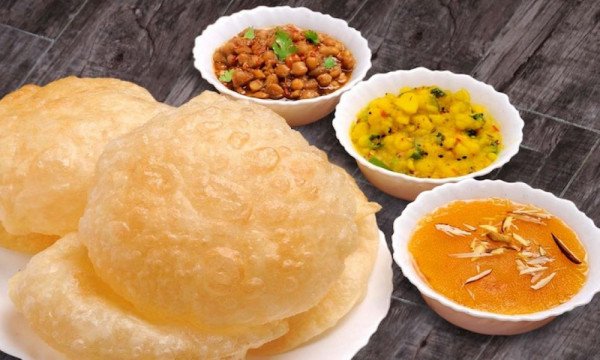
Grab a crunchy handful of hot puri and scoop up as much as you can of whichever side dish is there. Repeat the process of licking your fingers, smiling, then repeating the process. Sweet halwa and spicy chickpeas can be alternated in nibbles.
This dish is completed with at least one cup of dud pathi, as is the case with most Pakistani meals (milk-only tea, no water).
Kabul, Afghanistan's capital, is within a few hours' drive from Pakistan's KP Province (northwestern border). Imagine Silk Road traders delivering the very first servings of Kabuli Pulao to Western Pakistan to consume.
Pulao can be cooked with any size grain of rice, which is always fried in oil while vast amounts of dry spices are stirred in. In the middle of each large batch, there will usually be a chunk of mutton or beef meat, perhaps an entire leg.
The rice has a saffron flavor and color, although the spices are usually milder than in biryani. A wonderful sweet aroma comes from whole cardamom cloves and golden sultana raisins, and in larger establishments, peanuts and even pistachios may be added as a garnish.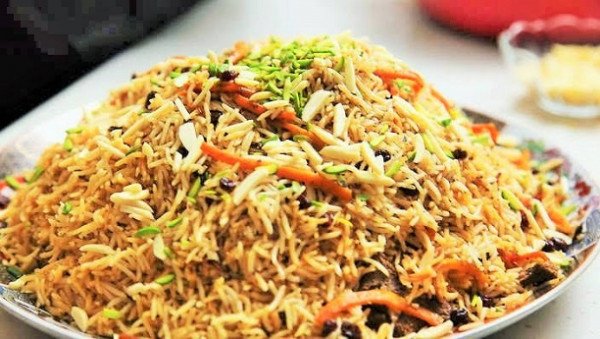
Pulao is easily identified on the street by its massive stainless steel cooking vessel, which has a peculiar, bell-like shape and frequently rests at an odd 45-degree inclination.
Kabuli Pulao has a wonderful aroma, a lovely appearance, and, of course, a delicious taste. A fantastic dish for lunch while strolling through the bustling streets of any of Pakistan's main towns, particularly in and around Peshawar.
Karahi is one of the best types of Pakistani cuisine, and it is loved by all Pakistanis. Karahis can be found cooking in the tiniest roadside kiosk or the opulent kitchen of a local Rajah.
The black, iron scoop-shape pan gives the dish its name. A karahi curry is typically cooked with goat, but it can also be made with chicken or shrimp. The metal dish can then be used as a serving bowl, bringing sizzling hot food to the table's center.
Tomatoes, onions, and some form of animal fat are used in most Pakistani karahi dishes. The ultra-umami enchantment of each Karahi comes from the tomato broth, which is full of smokiness, tender bits of meat, and a lot of fat — from the meat, the ghee, and a dab of cream every now and again.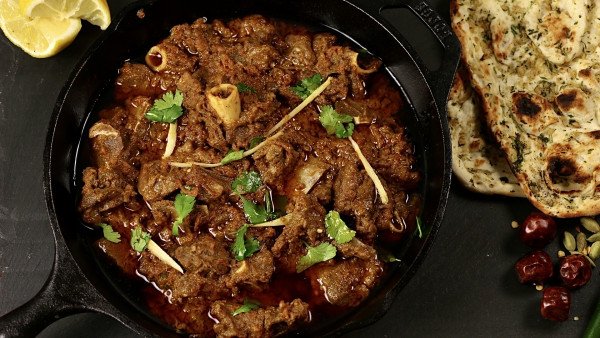
To make this dish, you'll need a large set of pliers to grip the pan and a metal spatula to move the meat about. Every pan is cooked over a blazing high heat, and the chef's motions are consistent: add oil, meat, count to three, stir. More oil, a tight hold on the pan to quickly add spices, a transfer of the entire dish to a serving plate, and last, a deep breath (chef wipes a dripping brow).
This is a Famous Pakistani meal that can be found all over the country. (Mutton Karahi Recipe)
The Traditional Pakistani Food. ( Haleem Recipe )
Haleem is a hearty dish created from a mixture of barley, local wheat varieties, and chana (chickpeas). This meal reflects the Middle Eastern influence on Pakistan, and people have been enjoying Haleem for generations.
Haleem's pleasant, home-cooked flavor is achieved by slow-cooking for up to a whole day on very low heat. In the mother-pot, onions (fried separately), mint leaves, green and dried chilies, and masala spices are added, followed by hefty squeezes of lemon juice at the end.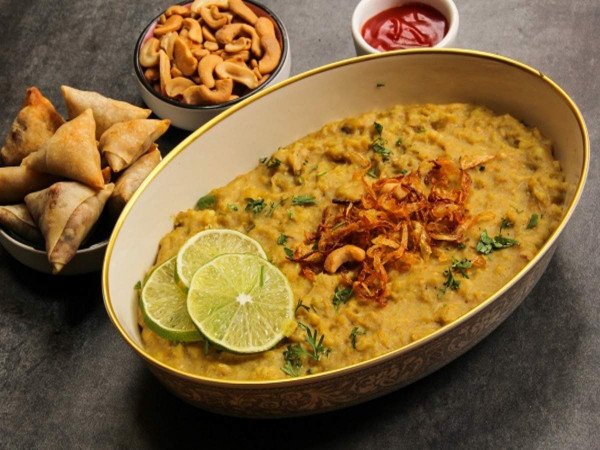
This is a terrific breakfast or early lunch option. It's quite filling, with plenty of calories to keep you going all day. A nice bowl of haleem can have such a rich flavor that just eating it with roti and drinking a few glasses of milk or green tea can make you feel perfectly satisfied.
6. Mutton Korma
A traditional Punjabi supper would have to contain at least one mutton dish - most likely a korma curry, like the one shown below.
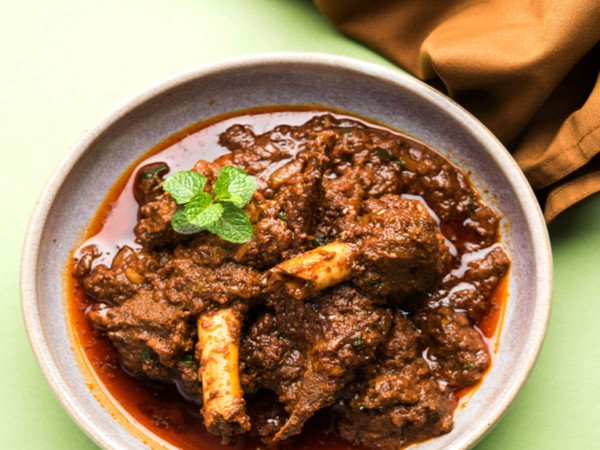
Mutton korma is a rich and hearty dish made with exceptionally soft chunks of sheep or goat meat and a dark crimson spice blend.
From the top of Pakistan's Himalayas to the bottom of the Indian Subcontinent, a large portion of the world's population is undoubtedly dreaming of their mother's mutton curry right now. In Pakistan, we had some fantastic mutton curries; in particular, if you're in Lahore, don't miss the mutton korma.
Saag is another popular dish in Pakistan's Punjab province. The dish's name simply means "mustard greens," yet it can be accompanied by a variety of other ingredients.
Sarson Ka Saag Makki Ki Roti Recipe :
The mustard greens are cooked slowly until the leaves are so mushy that they are literally falling apart, almost like a stew. Mint, coriander, and chili flakes are common seasonings, as are ample amounts of beautiful desi ghee.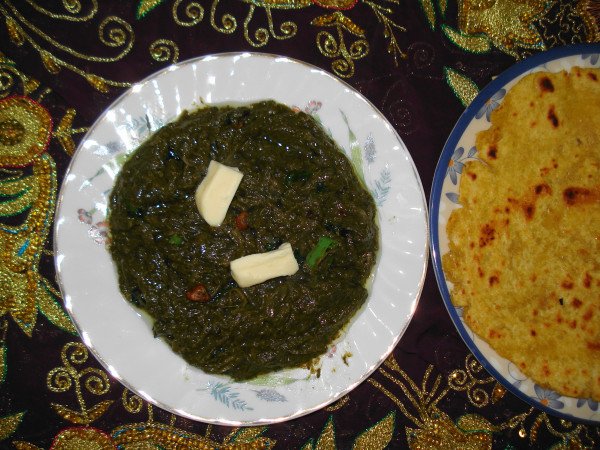
(You may be familiar with the more widely known variation, saag paneer, which is made with soft cheese.) However, in Pakistan, you can find plenty with more daring embellishments. Enjoy an amazing rendition made with enormous pieces of mutton meat in the northern town of Skardu, and the saag dish from the Peshawari Grandfather in the photo above was even sour (maybe made with mustard greens?), very healthy-feeling, and using few seasonings, and he serves it cold! Refreshing.)
After all of Pakistan's deliciously substantial meat feasts, you'll appreciate the cold and refreshing tradition of drinking lassi after breakfast, lunch, or really any time.
Because lassi is just the name of the drink, many of the variations in English will be written as ‘salt lassi,' ‘sweet lassi,' or a fruit variety with mango.
The majority of Pakistani Lassi Recipe manufacturers prepare the drink from scratch. It's fascinating to see each cup of milk morph; certain versions, such as those with cream or butter, even allow you to watch the chef churn it all by hand.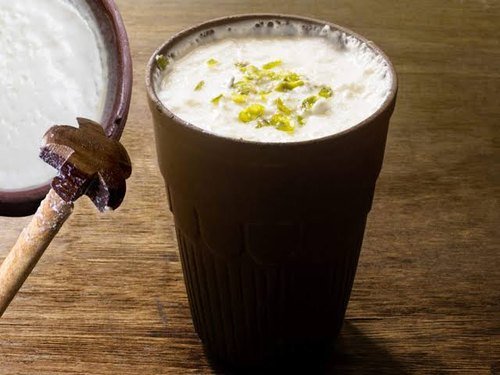
Some are incredibly simple, consisting only of yoghurt, sugar, and ice water, while others (such as the version shown above) contain layers upon layers of inventive flavor and texture combinations.
9. Biriyani
Biriyani may resemble pulao at first glance, but the two dishes are fundamentally different. Each mouthful of steamed biriyani can be unique, whereas pulao has all of its ingredients fried together in oil (mixing all of the flavors in each bite) (ingredients are separate). ( Chicken Biriyani Recipe )
Sifted dry spice combinations of cumin, nutmeg, cardamom, and, of course, turmeric are laid over pre-steamed rice in a huge cooking pan. The last layer of garnishes, generally carrots or peanuts, is then sprinkled on top before being served with a few slices of meat.
There is no stirring or combining of ingredients until the rice is on your dish because each layer is added separately. You're essentially served a cross-section of the entire cooking pot, with each flavor of the food visible and appreciable.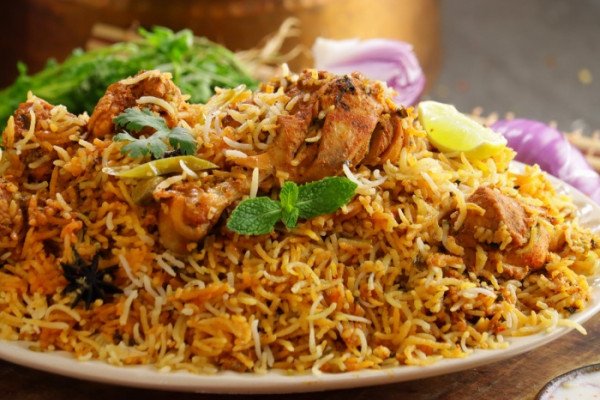
Because this dish can be a little dry, it's frequently served with raita as a side dish (light yoghurt). A plate of biriyani is ideal for a mid-day snack while strolling through the streets of a lively Pakistani city.
Pakistani tikkas are one of the few dishes that Central Asians will warmly welcome you to taste and enjoy.
Tikka is a type of ‘kebab,' with the main difference being that tikka uses larger chunks of marinated meat (kebab meat is usually minced and then seasoned, and formed onto the skewer by hand). It has been a staple of nomadic herders' daily meals, or ancient Kings' fatty lambs, all the way to today's mega-city road-side BBQs.
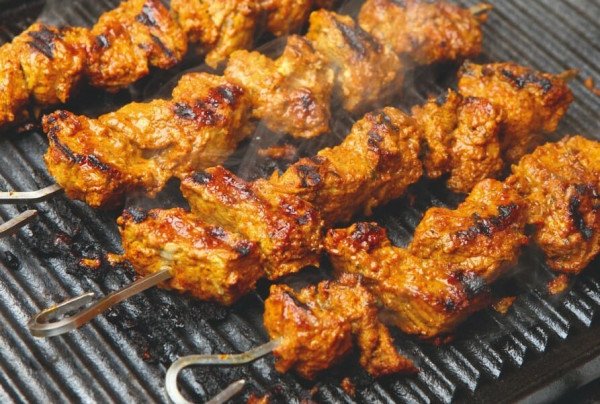
The time-less and ever-simple habit of eating skewers of bits of meat grilling over an open flame has never, and will never, cease to gratify anyone traveling in (or native to) this entire section of the planet.
Chapli kebab is not only the best of all Pakistani cuisine, but also one of the best dishes in the world. (Chapli Kebab Recipe).
This meal, also known as "Peshawari Kebab," is a pilgrimage-worthy delicacy. I can't say enough good things about it; it's on my list of "items worth flying for merely to eat."
The amount of taste in this hand-formed deep-fat-fried patty is mind-boggling.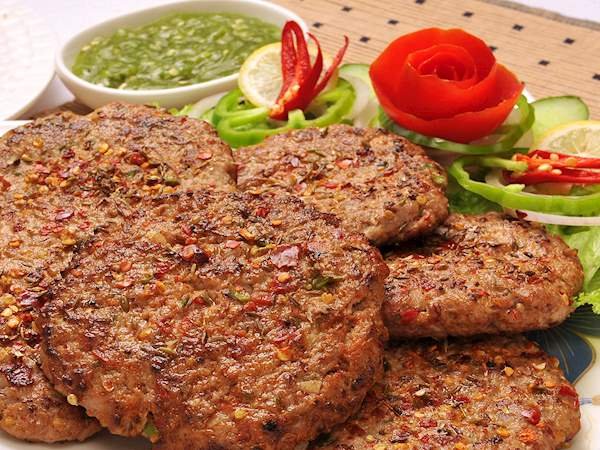
The mince is kneaded with dry spices and sometimes a few fresh ingredients, such as white onions and cilantro, and is often made using buffalo meat. Some variations include tomato, but I always tasted cumin seeds, a pungent black pepper, and hints of cardamom wherever we ate them.
Paya literally means "legs" in Urdu, and it is one of Pakistan's most popular dishes.
The dish is simple, but it takes a long time to prepare. It gets its wonderful flavor through slow cooking for hours - generally since the night before the restaurant serves it.
Onions, red oil with curry spices, and enormous bowls of bone-in goat legs and feet are the main ingredients. The tendons and cartilage surrounding the joint become juicy and easy to chew after hours of steeping, and the red curry broth lifts the overall flavor to extraordinary heights.
This dish is always served with a stack of hot, fresh roti bread. It's an oily, meaty, wonderfully slimy sensation that you won't want to miss in Pakistan.
13. Sajji
Sajji can be cooked using a variety of meats, although chicken is the most common. ( Best Sajji Recipe ).
The clever presentation techniques do a fantastic job of promoting the grill master. If you're anything like me, you might find yourself drawn in a trance and floating across the street.
Just entering into a sajji restaurant should be enough to get you excited. Your beef dish was speared through and held aloft like a trophy, spilling juices falling and sizzling on a vast bed of hot coals.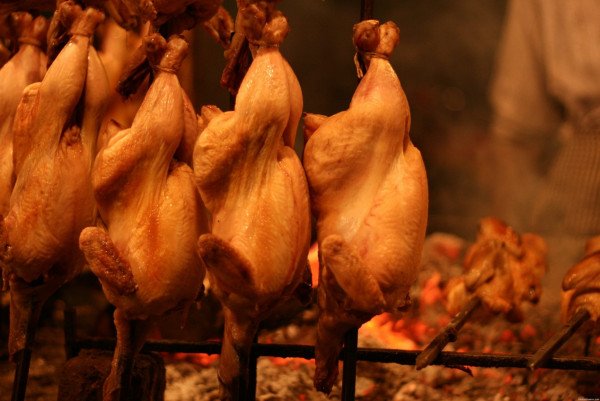
There is very little seasoning applied because the charcoal heat and the quality of the meat are the most important factors. Sajji is served with a stack of sizzling hot roti bread directly from the tandoor oven, as it is in most Pakistani restaurants.
The quantity of flavors in the spiced-to-perfection platter of Brain Masala will live on in my nightmares.
I almost wanted to establish an import-export business on the spot after eating one of the tastiest street food things I had during my trip to Peshawar.
The majority of the taste comes from the tomato sauce and masala spices, which are cooked in a hot iron skillet. 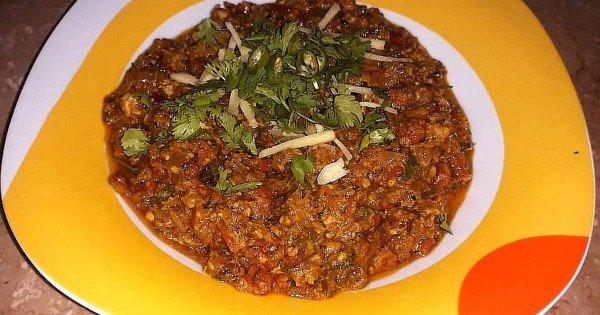
The dish is finished with green onions, cilantro, and red chili powder, and the brains are scrambled (do not burn the brains). Definitely an off-the-beaten-path item in Pakistan (this one in Peshawar, which is an incredible city), but well worth the effort if you happen to be there.
Paratha is the most frequent everyday breakfast in Pakistan, while halwa puri is a rare and appreciated breakfast meal.
It's a ball of dough formed into a flaky circle and shallow fried in a generous amount of oil or ghee over a hot plate in its simplest and most frequent form. Other variations exist, such as an aloo paratha packed with potatoes, onions, and masala seasonings in the center. ( Aloo Paratha Recipe ).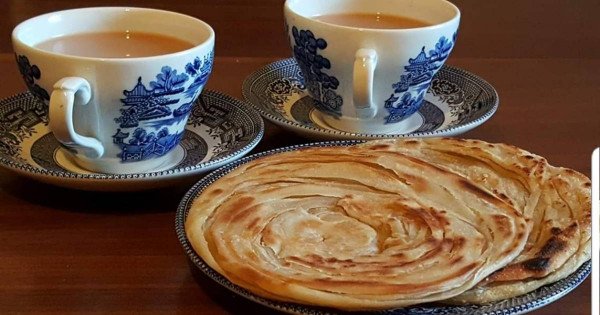
The flaky layers of dough, both gooey and crispy at the same time, are one of the best parts of eating a paratha.
Then there's THE Bun Kebab. “Few things are more truly Karachi than an afternoon of Bun Kebabs,” my Pakistani local friends have told me more than once. ( Bun Kebab Recipe ).
Imagine the finest hamburger slider you've ever tasted, served with mint chutney on the side. Add a fried egg as a bonus topping, then stack each layer on top of the previous one while cooking, making sure none of it escapes the frying pan.
Small, dense patties are dipped in a lentil, yogurt, and egg batter before being swiftly pressed into the huge frying pan by hand. The buns are usually white bread and are cooked to a light crispiness while sitting right next to the patties and eggs.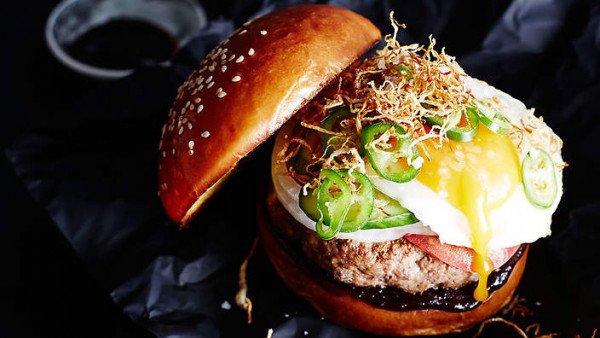
Bun Kebabs are served in rounds as quickly as the prep chef can collect them, and they are always served with a side of red onions. The forebodingly dark but deliciously aromatic mint chutney is a must-have for your lunch, and you'll want to order an entire dish of it to accompany your Bun Kebabs.
Chaat are one of the most cost-effective ways to eat a substantial snack, but that doesn't mean they aren't delicious on their own. ( Best Chaat Recipe ).
Chaat is a tasty but full snack that can be eaten standing or on the go. It is a popular Pakistani street meal.
A dish with a wide range of flavors that is more than just a culinary name. Chaat is stylish, and there is undoubtedly a culture surrounding its manufacture. It is a basic yet brilliant dish.
Some chaat start with a bed of chickpeas that are then topped with sour, spicy, or cooling sauces. The meal is finished with a final coating of some form of crunchy component.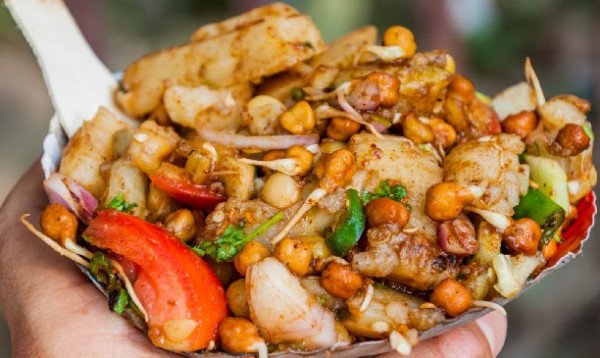
Fried dough, peanuts, and even something more modern like crisps/potato chips can be found. You might get tamarind sauce, refreshing mint yoghurt, or an astonishing array of fresh cut veggies like white onion, cucumbers, or red beets if you order "the works."